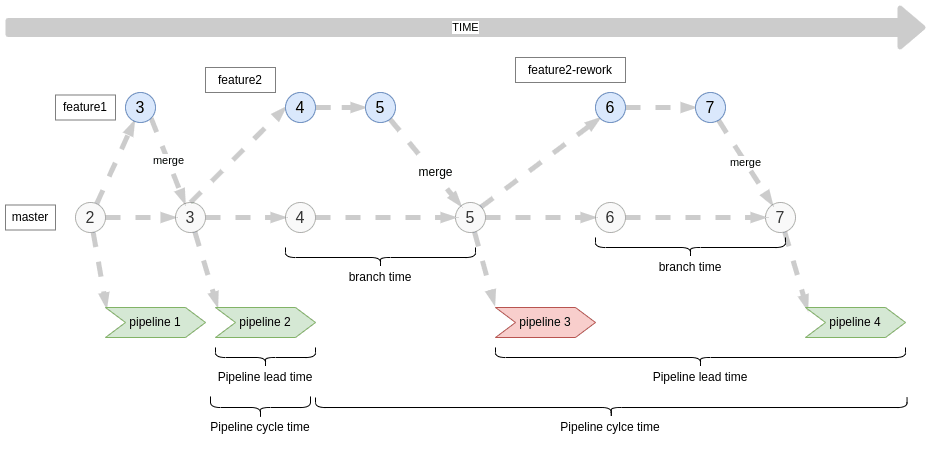Branch time is the length of time that a commit lives on a branch, before being merged to the mainline branch.
It is the time between the oldest commit on a branch, after a shared ancestor, and the time a PR is merged to the mainline branch.
Branch time is the length of time that a commit lives on a branch, before being merged to the mainline branch.
It is the time between the oldest commit on a branch, after a shared ancestor, and the time a PR is merged to the mainline branch.
There are a number of factors that affect how branch time may be calculated:
WayFinder calculates branch time based on change sets into your main branch. Every merge to master (or main) is a single change set that triggers your deployment pipeline.
Due to the way that we calculate release time, this leads to some double accounting:

In the example above, when the pipeline fails, the time required to rework is counted twice. The branch time for the rework itself and the release time for the failed change.
WayFinder calculates branch time using the most pessimistic measure. In our opinion this incentivises desirable behaviours that reduce lead time overall.
https://blog.carbonfive.com/2017/08/28/always-squash-and-rebase-your-git-commits/
https://www.atlassian.com/git/tutorials/merging-vs-rebasing#the-golden-rule-of-rebasing
https://www.atlassian.com/git/tutorials/using-branches/git-merge
https://git-scm.com/book/en/v2/Git-Tools-Rewriting-History
https://medium.com/thg-tech-blog/measuring-software-delivery-d3e3e078539d